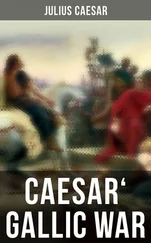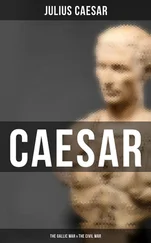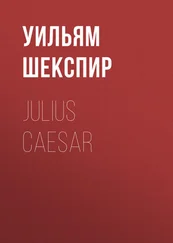Napoleon III - History of Julius Caesar Vol. 2 of 2
Здесь есть возможность читать онлайн «Napoleon III - History of Julius Caesar Vol. 2 of 2» — ознакомительный отрывок электронной книги совершенно бесплатно, а после прочтения отрывка купить полную версию. В некоторых случаях можно слушать аудио, скачать через торрент в формате fb2 и присутствует краткое содержание. Жанр: foreign_antique, foreign_prose, Биографии и Мемуары, на английском языке. Описание произведения, (предисловие) а так же отзывы посетителей доступны на портале библиотеки ЛибКат.
- Название:History of Julius Caesar Vol. 2 of 2
- Автор:
- Жанр:
- Год:неизвестен
- ISBN:нет данных
- Рейтинг книги:4 / 5. Голосов: 1
-
Избранное:Добавить в избранное
- Отзывы:
-
Ваша оценка:
- 80
- 1
- 2
- 3
- 4
- 5
History of Julius Caesar Vol. 2 of 2: краткое содержание, описание и аннотация
Предлагаем к чтению аннотацию, описание, краткое содержание или предисловие (зависит от того, что написал сам автор книги «History of Julius Caesar Vol. 2 of 2»). Если вы не нашли необходимую информацию о книге — напишите в комментариях, мы постараемся отыскать её.
History of Julius Caesar Vol. 2 of 2 — читать онлайн ознакомительный отрывок
Ниже представлен текст книги, разбитый по страницам. Система сохранения места последней прочитанной страницы, позволяет с удобством читать онлайн бесплатно книгу «History of Julius Caesar Vol. 2 of 2», без необходимости каждый раз заново искать на чём Вы остановились. Поставьте закладку, и сможете в любой момент перейти на страницу, на которой закончили чтение.
Интервал:
Закладка:
4. From the point of Epeisses to the escarpments of Etournel, extent 6 kilomètres. – From Epeisses to Chancy the Rhone flows in a straight line, and presents the appearance of a vast fosse, 100 mètres wide, the walls of which have an inclination of more than 45 degrees. ( See the profile g g .)
At 200 mètres above Chancy, at k , the character of the banks changes suddenly. The heights on the right sink towards the river in tolerably gentle slopes, through an extent of 2,300 mètres, reckoning from k to the escarpments of Etournel. Opposite, on the left bank, extends the plateau of Chancy. It presents to the Rhone, from k to z , in a length of 1,400 mètres, an irregular crest, distant from 50 to 60 mètres from the river, and commanding it by about 20 mètres. The side towards the Rhone, from k to z , presents slopes which are very practicable. ( See the profile h h. )
The position of Chancy was certainly the theatre of the most serious attempts on the part of the Helvetii. Encamped on the heights of the right bank, they could easily descend to the Rhone, and there make their preparations for passing, on an extent of 1,500 mètres. The river once crossed, they had only before them, from k to z , slopes which were practicable to debouch on the plateau of Chancy.
The Romans had then to bar the gap k z by joining the impassable escarpments which terminate in k with those which commence at z , and which are also inaccessible. To effect this, they opened from one of these points to the other, in the upper part of the slope at the foot of which the Rhone flows, a longitudinal trench k z , similar to that already spoken of. It was 1,400 mètres in length.
5. From the escarpments of Etournel to the Pas-de-l’Ecluse, an extent of 6 kilomètres. – At the escarpments of Etournel, the Rhone removes from the heights on the right, and only returns to them towards the hamlet of the Isles, 2 kilomètres farther down. These heights form a vast semi-elliptical amphitheatre, embracing a plain slightly inclined towards the river. It is marked by a green tint on Plate 3. People can descend from all sides and approach the Rhone, the bank of which is flat. Opposite, the left bank presents insurmountable obstacles until below Cologny, at s . But below this point, from s to y , the bank is flat, and the heights situated behind are accessible on an extent of 2 kilomètres.
The Helvetii, established on the heights of Pougny and Colonges, could descend to the Rhone, and cross it between Etournel and the hamlet of Les Isles. The Romans had thus to unite the escarpments which terminate at Cologny with the impracticable slopes of the mountain of Le Vuache. Here again we shall see that they took advantage of the peculiarities of the ground.
At the village of Cologny, the heights form a triangular plateau, s u x , of which the point s advances like a promontory towards the Rhone, which it commands perpendicularly by at least 20 mètres. A projection of land, s u , bounds it in front, and separates it from a plain which extends to the river. The escarpment produced by this projection of land presents to the Rhone a slope of about 45 degrees. It rises over the plain about 14 mètres towards its extremity s , but diminishes gradually in height, until it is only 2 to 3 mètres in height near the point u . ( See the profile n n. ) The Romans hollowed, on the slope of the escarpment from s to u , a length of 800 mètres, a trench forming wall and fosse. The plateau of Cologny, situated in the rear, offered a favorable position for the defence of this retrenchment. ( See the profile p p. ) They prolonged their works towards the west as far as y ; beyond that, the heights presented sufficient natural obstacles. We may thus estimate that, from Cologny to the mountain of Le Vuache, the Romans executed from 1,600 to 1,700 mètres of retrenchments.
To sum up: the works executed on five principal points, between Geneva and the Jura, represent a total length of about 5,000 mètres, that is, less than the sixth part of the development of the course of the Rhone.
Admitting that Cæsar had at his disposal 10,000 men, we may suppose that he distributed them in the following manner: – 3,000 men on the heights of Avully, his head-quarters; 2,500 at Geneva; 1,000 on the plateau of Aire-la-Ville; 2,000 at Chancy; and 1,500 on the plateau of Cologny. These 10,000 men might be concentrated: in two hours, on the heights between Aire-la-Ville and Cartigny; in three hours, on the heights of Avully; in three hours and a half, on the plateau of Chancy; in three hours and a half, these troops, with the exception of those encamped at Geneva, might be brought together between Cologny and the fort of L’Ecluse. It would require five hours to carry the detachment from Geneva thither.
The detachments mentioned above, with the exception of that of Geneva, were established in what Cæsar calls the castella . These were constructed on the heights, in the proximity of the retrenchments which had to be defended – namely, at Aire-la-Ville, Avully, Chancy, and Cologny. They consisted probably of earthen redoubts, capable of containing a certain number of troops. They are represented by squares in Plate 3.
Cæsar could reconnoitre every instant the march and designs of the Helvetii, the heights of the left bank of the Rhone presenting a great number of positions where it was easy to place advantageously posts of observation. Commandant Stoffel has pointed out six, which are marked on Plate 3. As it will be observed, the Helvetii, in crossing the Rhone, could not be disturbed by darts thrown from the top of the retrenchments, for these darts would not carry to the left bank of the river. Now there exists at present, between this bank and the foot of the heights in which these trenches were cut, flat ground of more or less extent. Admitting, then, that the Rhone flowed nineteen centuries ago in the same bed as at the present day, we may ask if the Romans did not construct, in these low parts near the bank, ordinary retrenchments, composed of a fosse and rampart. The excavations undertaken by the Commandant Stoffel have revealed everywhere, in these plains, the existence of ground formed by alluvium, which would lead us to believe that the Rhone once covered them. However, even if at that epoch these little plains had been already uncovered, either wholly or in part, we can hardly suppose that Cæsar would have raised works there, since the heights situated in the rear permitted him, with less labour, to create a more redoubtable defence – that of the trenches opened along the crests. As we see, the obstacle presented to the assailants began only with these trenches, at the top of the slopes.
As to the vestiges which still appear to exist, they may be described as follows. The slopes which the Romans fortified at Chancy, from k to z , and at Cologny, from s to y , present, in the upper parts, in some places, undulations of ground, the form of which denotes the work of man. On the slope of Chancy, for instance, the ground presents a projection, i i ( see the profile h h ), very distinctly marked, and having the remarkable peculiarity that it is about 11 feet high and 8 to 9 feet broad. Now, is it not evident that, if one of the fosses which have been described should get filled up, either naturally, by the action of time, or by the processes of agriculture, it would take absolutely the form i i , with the dimensions just indicated? It would not, therefore, be rash to consider these peculiarities of the ground, such as i i , as traces of the Roman trenches.
Читать дальшеИнтервал:
Закладка:
Похожие книги на «History of Julius Caesar Vol. 2 of 2»
Представляем Вашему вниманию похожие книги на «History of Julius Caesar Vol. 2 of 2» списком для выбора. Мы отобрали схожую по названию и смыслу литературу в надежде предоставить читателям больше вариантов отыскать новые, интересные, ещё непрочитанные произведения.
Обсуждение, отзывы о книге «History of Julius Caesar Vol. 2 of 2» и просто собственные мнения читателей. Оставьте ваши комментарии, напишите, что Вы думаете о произведении, его смысле или главных героях. Укажите что конкретно понравилось, а что нет, и почему Вы так считаете.












